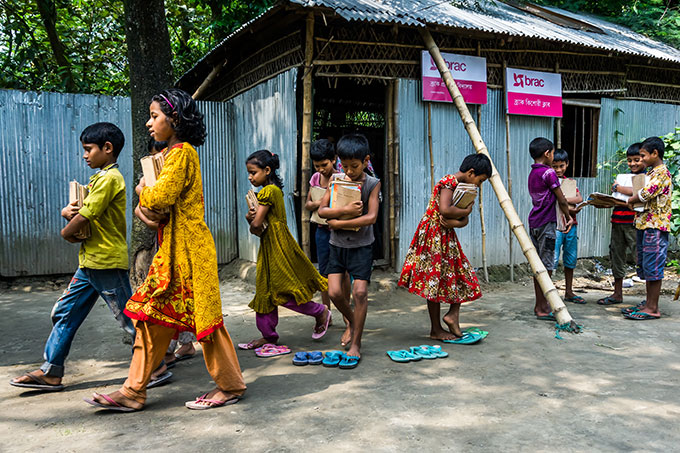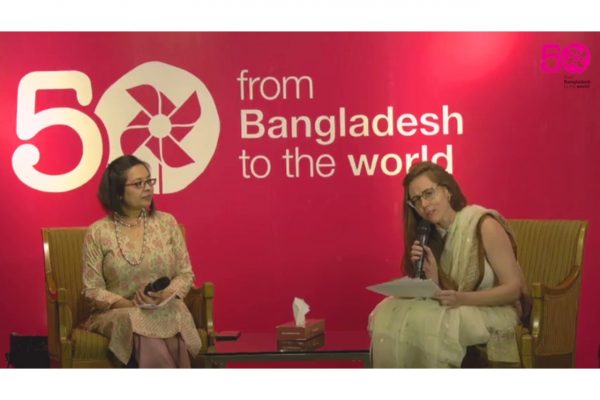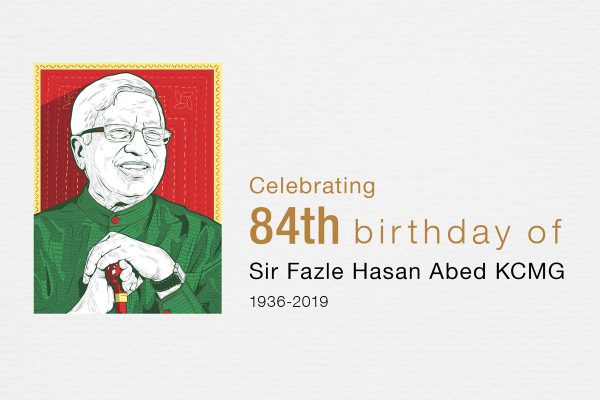Your big NGO isn’t a big brand. So what should be your brand strategy?
Reading Time: 5 minutes
Most people have probably never heard of the world’s largest non-governmental organisation. BRAC, with a workforce of over 100,000 people and projects reaching 1 in every 55 people, is the biggest development organisation operating today.
Originally appeared on Devex.
Most people have probably never heard of the world’s largest non-governmental organisation. BRAC, with a workforce of over 100,000 people and projects reaching 1 in every 55 people, is the biggest development organisation operating today.
But compared with groups such as Amnesty International, Oxfam, Red Cross, UNICEF and World Vision, BRAC is hardly a household name. Other organisations have become synonymous with supporting and advocating for developing communities.
The difference between BRAC and other international NGOs could be about strategy. Being a brand name doesn’t suit every organisation’s needs and may not even be in its benefit. But all NGOs have stakeholders and a message that needs to be communicated to them, so brand does matter.
Devex spoke to branding officials and NGO leaders about how organisations decide if popular brand recognition will help their cause. What sort of branding strategy makes sense for big NGOs that aren’t and don’t want to be household names?
Why brand matters
The for-profit sector dominates our thinking on branding and so does its aims — creating competitive advantage for a product.
“For the not-for-profit sector, the goal is very different. It is to get the mission done,” according to Nathalie Laidler-Kylander, managing director at Draper Richards Kaplan Foundation and author of “The Brand IDEA”.
“If you really think the role of the brand is PR and fundraising then you are really missing its power and what it can do for an organisation’s mission,” she told Devex.
The role of a brand is to help accomplish the organisation’s mission. If the average consumer is not a supporter in that mission, it may not make sense for an NGO to be a household brand. Examples include highly focused NGOs with vital but niche operations such as Pratham, which provides education resources to children in India or YWAM Medical Ships, which provide health and medical services to Papua New Guinea via use of a training and medical ship.
For organisations that rely on individuals for donations, the calculus is different. “For larger NGOs that depend on fundraising from the general public, it is important to have that household name,” Laidler-Kylander explained. Name recognition and trust can be an important factors when individuals decide whether and to whom they give. “Brands are about making decisions and it helps people to make shortcuts in those decisions.”
Building the right brand
Laidler-Kylander differentiates two components to branding: The brand identity is the internal description of an organisation, anchored in the mission and values, while the brand image is the external perception of the organisation. Within an NGO, the person in charge of the brand strategy needs to ensure these two components are aligned.
Understanding stakeholders is a critical first step. “Identify stakeholders, key partners, key beneficiaries and really reach out to them to find out how they perceive your work and organization,” Laidler-Kylander urged.
This outreach can help identify who the brand should target as well as help ensure stakeholder perception align with the NGOs mission and values.
At BRAC, for example, “our focus is, has always been, and will always be, on our work,” Sarah-Jane Saltmarsh, content development manager at the organisation, told Devex. That get-things-done attitude has shaped the organisation’s visual brand, which has been consistent throughout their history. Their key audiences are the recipients of services, government partner organisations, institutional donors and knowledge partners.
“We began as a relief organisation, over 40 years ago, as a temporary effort in one village, by one man who believed that poverty was dehumanising,” Saltmarsh said.
BRAC’s visual identity, including a circular logo representing unity, aims to represent them to the world at a glance — bright, natural and honest. Their image focuses on creating a world free of exploitation and discrimination where everyone has the opportunity to realise their potential.
After creating a brand concept, NGOs can build brand ambassadors who adequately understand and can target their audience.
“Brand ambassadors can be your staff, volunteers; they are definitely your board members, partners that work with you closely and they can also be beneficiaries that have had contact with your services,” Laidler-Kylander said. “Through brand ambassadors you are creating a collective of people that can speak about your work so that you don’t have to.”
For household brands, ambassadors are commonly associated with celebrity. But for other brands, an ambassador can be respected figures or expert within fields linked to the NGO with a passion for their cause. They will promote the brand through passion rather than financial incentive.
Increasingly, that public diplomacy is happening through social media. “It’s so much easier and much more relevant to have other people speaking about you,” Laidler-Kylander told Devex. “Word of mouth and social media is really critical to building strong brand.”
BRAC, for examples, uses a range of platforms to spread their brand message to stakeholders. “We use pretty much everything, from village theatres in the most remote last-mile areas, to interactive digital storytelling,” Saltmarsh explained.
A collective brand
In addition to advertising the mission and values of NGOs, brands can also be used to create partnerships with other organisations. In this sense, branding within the development community can be just as important as public branding.
The NGO RefugePoint offers one example, using their objectives and reputation as a leader in refugee solutions and support to partner with 27 aid and development organisations including the American Refugee Committee, Amnesty International and the U.N. refugee agency.
“They use their brand to be conveners and gather up other organisations in their field so that they can start collaborating and reaching out to donors as a united front,” Laidler-Kylander explained. “They are doing it as a collective rather than thinking about brand to create competitive advantage which is very divisive and, longer-term, reduces your ability to implement the mission.”
Collaboration has also been a key part of the BRAC brand with partners including the U.K.’s Department for International Development, the U.S. Agency for International Development and Australia’s Department of Foreign Affairs and Trade. BRAC has cultivated a reputation for excellence, which has been fundamental in these partnerships. According to a June 2015 report from DfID, BRAC were seen as a “uniquely qualified and credible partner” due their services, capacity, track record and “impeccable credentials”.
The risks of high-profile branding
A high public profile can be a double-edged sword. If something happens either within the organisation or to an organisation like them, negative spillover could reduce public trust.
“There was a scandal in the US regarding the Red Cross following Hurricanes Isaac and Sandy,” Laidler-Kylander said. “There were allegations that the Red Cross vans were driving around empty so people could see the logo. What happens is if you are just focusing on visibility, you are divorcing the use of your brand from the fundamental mission of your organisation and you create situations that erodes trust.”
BRAC increasingly wants to focus on scaling their influence, and the Sustainable Development Goals have provided a platform for their expansion. To achieve the next step in their mission, BRAC will plan to evolve from a respected brand within development to a household development brand.
“Right now, we’re a household name to 1 in every 55 people, but we definitely want our second stories to reach the other 54,” Saltmarsh said. “We need all 7 billion and counting of us if we are to achieve the BRAC vision.”
They will be a brand for all NGOs to watch.






